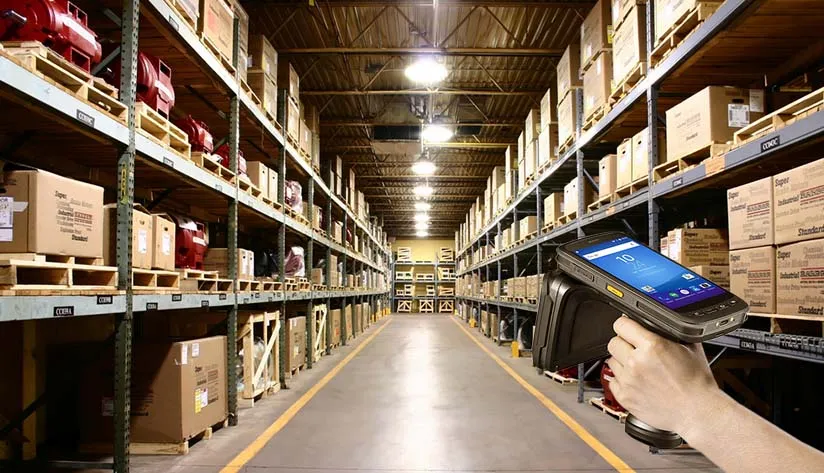RFID access control technology provides a secure and efficient method for managing access to facilities. Utilizing radio-frequency identification, it allows businesses to effortlessly track and control who enters specific areas, enhancing safety and reducing unauthorized access. Key features include real-time monitoring, easy integration with existing security systems, and the ability to manage multiple users and locations from a centralized platform. The benefits extend to improved operational efficiency, streamlined access management, and robust data collection for security analytics. This modern solution is essential for businesses aiming to safeguard their assets, streamline operations, and ensure a secure environment in an increasingly security-conscious world.
Category Archives: INDUSTRIES
NFC garment badges are revolutionizing apparel retail by enhancing customer engagement and streamlining inventory management. These innovative badges enable seamless interactions through smartphone technology, allowing consumers to access product information, promotions, and personalized experiences with a simple tap. The key advantages include improved operational efficiency, increased sales through targeted marketing, and enriched customer loyalty. By integrating NFC technology, retailers can differentiate themselves, adapt to modern shopping behaviors, and create a more interactive and informative shopping environment, ultimately driving growth and innovation in the industry.
The post “RFID Antenna Power IoT Connectivity: Unleashing the Driving Force” explores the transformative impact of RFID technology on IoT connectivity. It highlights key features such as enhanced data transmission, real-time tracking, and streamlined operations. The advantages of implementing RFID antennas include improved efficiency, cost reduction, and increased accuracy in asset management. Unique aspects of the technology include its scalability and compatibility with various IoT applications, making RFID a vital component in modern connectivity solutions. Overall, the post emphasizes RFID’s role as a driving force in advancing IoT capabilities.
The blog post “How NFC Garment Badges and NFTs Are Revolutionizing Fashion” explores the transformative impact of integrating Near Field Communication (NFC) technology and Non-Fungible Tokens (NFTs) in the fashion industry. It highlights how NFC garment badges enable seamless interaction between physical clothing and digital content, enhancing consumer engagement through instant access to product information, authenticity verification, and personalized experiences. Additionally, NFTs offer a unique way to own and trade digital fashion items, establishing provenance and scarcity in a digital marketplace. Together, these technologies are redefining fashion by creating innovative shopping experiences, promoting sustainability through transparent supply chains, and fostering a closer relationship between brands and consumers, ultimately setting a new standard for authenticity and personalization in the industry.
RFID Asset Tracking Systems are innovative technologies that use radio frequency identification to enhance the management and tracking of assets. This post explains how these systems operate, detailing the components such as tags, readers, and software, which work together to capture real-time data on asset location and movement. Key advantages include increased efficiency, reduced labor costs, and improved inventory accuracy, leading to better resource management. The post also highlights distinctive qualities such as the ability to track items in bulk, protection against loss, and the scalability of RFID solutions, making them essential for businesses seeking optimized operations and comprehensive visibility into their assets.
In the post “How to Choose the Right RFID Reader for Efficient Warehouse Management,” readers are guided through the essential criteria for selecting the most suitable RFID (Radio Frequency Identification) reader to enhance warehouse operations. Key features highlighted include reading range, data processing speed, and compatibility with existing systems. The post emphasizes the advantages of improved inventory accuracy, reduced manual labor, and streamlined workflows that come with the right RFID reader. It also discusses distinctive qualities such as durability for harsh environments and user-friendly interfaces, ensuring efficiency and reliability in warehouse management. By making an informed choice, businesses can significantly boost their operational effectiveness and inventory control.
This beginner’s guide to RFID in asset tracking explores the transformative advantages of RFID technology for enhancing efficiency and security in inventory management. Key features include real-time tracking, automated inventory updates, and improved accuracy, which collectively minimize losses and streamline operations. The post highlights how RFID systems reduce manual errors, offer robust data insights, and enhance asset visibility, making them an essential tool for businesses looking to optimize their asset management processes. Distinctive qualities of RFID include its scalability and adaptability, making it suitable for a variety of industries while ensuring an overall boost in operational productivity and security.
RFID cable tie tags significantly improve equipment management by streamlining tracking and inventory processes. These innovative tags provide real-time data on the location and status of assets, reducing the risk of loss and enhancing operational efficiency. Key advantages include easy installation, durability, and the ability to automate data collection, allowing for accurate and up-to-date asset information. Their distinctive features, such as compatibility with various RFID systems and customizable designs, make them an essential tool for businesses looking to optimize their equipment management strategies.
UHF RFID tags significantly enhance healthcare equipment management by streamlining tracking and inventory processes. These tags enable real-time monitoring of medical devices, improving efficiency and accuracy in locating equipment. Key advantages include reduced loss of items, better compliance with regulatory standards, and optimized asset utilization. Their robust design withstands sterilization processes, ensuring durability in healthcare environments. By integrating UHF RFID technology, healthcare facilities can enhance patient care, reduce costs, and maintain high operational efficiency, positioning RFID as a vital tool in modern healthcare management.
The post “How RFID Technology Revolutionizes Operations in the Entertainment Industry” explores the transformative impact of RFID (Radio Frequency Identification) technology on entertainment venues and events. It highlights key features such as enhanced inventory management, streamlined access control, and improved audience engagement. RFID enables quicker check-ins, reduces wait times, and facilitates real-time tracking of assets, leading to increased operational efficiency. The advantages of adopting RFID include cost savings, better security, and the creation of personalized experiences for attendees. Overall, the article underscores how RFID is reshaping the entertainment landscape, making it more innovative, efficient, and customer-focused.








